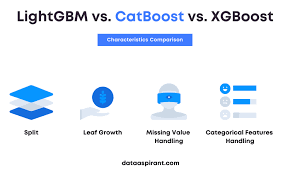comprehensive guide to Accelerating Gradient Boosting Machines (GBM) with Parallel and Distributed Computing 2024
Gradient Boosting Machines (GBM) have become one of the most powerful and widely used machine learning techniques for both classification and regression tasks. The ensemble method improves predictive accuracy by combining multiple weak learners (typically decision trees) to create a strong predictive model. However, training GBM on large datasets or in high-dimensional spaces can be computationally expensive and time-consuming. To address these challenges, parallelization and distributed computing have emerged as key techniques to accelerate GBM performance. This blog will explore how parallelized and distributed GBMs can be implemented to enhance model training and prediction, with a focus on the ThunderGBM library, which leverages GPU acceleration.
What is Gradient Boosting?

Gradient Boosting is a machine learning technique used to build predictive models by combining multiple weak learners, typically decision trees. The idea behind boosting is to iteratively add trees that correct the mistakes made by previous ones. The model is trained in stages, and each new tree improves the model by focusing on the residual errors (the difference between the predicted and actual values) of the previous stage.
The gradient boosting algorithm involves three key components:
- A loss function: The function is optimized by the model to minimize prediction errors.
- Weak learners (usually decision trees): These trees are used to predict the residuals.
- An additive model: This model combines the outputs of all weak learners to minimize the loss function.
Challenges in Training Gradient Boosting Models
Although GBMs are highly effective, training them on large datasets or in high-dimensional spaces can be very computationally expensive. The key reasons for this are:
- Iterative Nature: Each new tree is added to correct the errors of the previous trees, which requires multiple passes over the data.
- Complexity of Feature Space: GBMs can handle high-dimensional feature spaces, but evaluating each feature split for each tree becomes increasingly time-consuming as the number of features grows.
- Data Size: As the dataset grows, the amount of computation required for each split increases, making it difficult to scale GBM training to larger datasets.
Parallel and Distributed GBMs

To tackle these computational challenges, parallelization and distributed computing are crucial. These techniques help speed up training, reduce processing time, and enable GBMs to scale to much larger datasets and higher dimensional problems. Below are two main techniques used to optimize GBM:
1. Parallelized GBM
Parallel computing involves dividing the work of training a model across multiple processors (CPUs or GPUs), allowing for simultaneous execution of computations. Parallelization in GBM can occur at several stages:
- Tree Construction: The process of evaluating split points for each node in a tree can be parallelized across multiple processors. Each processor can independently calculate the best split for a subset of the data, dramatically reducing the time spent on this stage.
- Residual Calculation: The residuals for each instance can be computed in parallel, as they are independent calculations.
- Prediction: Once the model is trained, predictions for all instances can be made in parallel, speeding up the process of applying the model to new data.
2. Distributed GBM
Distributed computing allows GBM to scale across multiple machines or nodes, with each node working on a subset of the data. This technique is particularly effective when the dataset is too large to fit into the memory of a single machine. The distributed approach has several benefits:
- Data Parallelism: The dataset is divided into smaller chunks, with each node handling a different portion of the data. Nodes collaborate to train the model by sharing intermediate results (e.g., gradients) and combining their findings.
- Model Parallelism: Different parts of the model (e.g., different trees) can be trained across different nodes, allowing the model to be scaled horizontally.
- Efficient Communication: Nodes communicate periodically to share model updates and synchronize their results, allowing them to build a global model collaboratively.
ThunderGBM: GPU-Accelerated Gradient Boosting

One of the most promising tools for accelerating Gradient Boosting is ThunderGBM, an open-source software toolkit that leverages Graphics Processing Units (GPUs) to speed up the training of Gradient Boosting Decision Trees (GBDTs) and Random Forests (RFs). ThunderGBM provides an efficient, parallel, and distributed framework for training GBM models, offering significant performance improvements over traditional CPU-based libraries.
Key Features of ThunderGBM:
- GPU Acceleration: ThunderGBM uses GPU cores to accelerate the time-consuming operations of GBM, such as calculating gradients, constructing trees, and evaluating split points.
- Scalability: It supports training on a single GPU or multiple GPUs within a machine, providing scalability for larger datasets.
- Task Support: ThunderGBM supports binary and multi-class classification, regression, and ranking tasks, making it versatile for various types of machine learning problems.
- Faster Training: ThunderGBM outperforms popular libraries like XGBoost, LightGBM, and CatBoost on both CPU and GPU, particularly for high-dimensional data where other libraries struggle.
ThunderGBM Performance:
ThunderGBM has shown to be 6.4 to 10x faster on CPU and 1 to 10x faster on GPU than existing libraries like XGBoost and LightGBM, particularly when handling high-dimensional problems. This is achieved by maximizing GPU usage, whereas other libraries only use GPUs for specific parts of the GBM process, leaving the rest of the operations reliant on CPUs.
Optimizations in ThunderGBM
ThunderGBM utilizes several advanced optimization techniques to ensure efficient training:
- Gradient and Second-Order Derivatives on GPUs: ThunderGBM computes the gradients and second-order derivatives for each training instance using GPU acceleration. This allows for faster and more efficient calculations, which are critical for building accurate models.
- Efficient Tree Construction: The tree construction process in ThunderGBM is optimized by using histogram-based training for dense datasets and enumeration-based approaches for sparse datasets. The use of shared memory on GPUs enables faster computation of split point candidates and efficient reduction of large datasets.
ThunderGBM System Design and Workflow
ThunderGBM has a well-structured system design that divides the training process into two main modules:
- Tree Construction Module: This module handles the construction of decision trees, optimizing the process by parallelizing the calculation of gradients and the evaluation of split points.
- Prediction Module: The prediction process involves concurrent tree traversal on GPUs, allowing ThunderGBM to aggregate the predictions from multiple trees in parallel, speeding up the overall prediction phase.
Comparison with XGBoost, LightGBM, and CatBoost

ThunderGBM has been shown to outperform XGBoost, LightGBM, and CatBoost in several performance metrics:
- Training Speed: ThunderGBM is significantly faster in both CPU and GPU settings.
- Handling High Dimensional Data: ThunderGBM excels in scenarios where other libraries fail or run slow due to high-dimensional data.
- Accuracy: ThunderGBM produces models that are comparable or better than existing libraries while requiring fewer computational resources.
Conclusion: The Future of Gradient Boosting with ThunderGBM
As machine learning continues to grow and datasets become larger and more complex, parallelized and distributed Gradient Boosting Machines are essential to improve model training efficiency. ThunderGBM offers a promising solution by leveraging GPU acceleration and parallel processing to make GBM faster and more scalable. Its ability to handle high-dimensional datasets where other libraries falter makes it a powerful tool for data scientists working with large, complex data.
By incorporating ThunderGBM into your workflow, you can achieve faster training times, higher accuracy, and the ability to tackle more complex machine learning problems, all while minimizing computational costs.